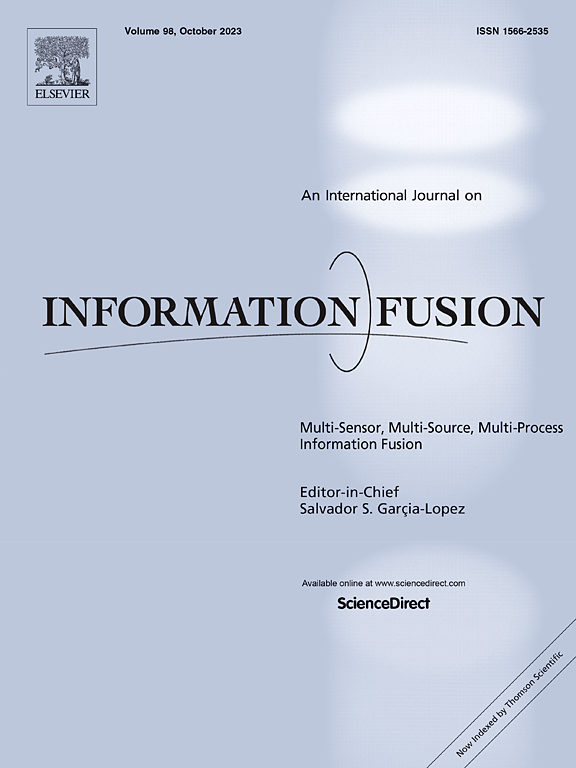Memory recall: Retrieval-Augmented mind reconstruction for brain decoding
IF 14.7
1区 计算机科学
Q1 COMPUTER SCIENCE, ARTIFICIAL INTELLIGENCE
引用次数: 0
Abstract
Reconstructing visual stimuli from functional magnetic resonance imaging (fMRI) is a complex challenge in neuroscience. Most existing approaches rely on mapping neural signals to pretrained models to generate latent variables, which are then used to reconstruct images via a diffusion model. However, this multi-step process can result in the loss of crucial semantic details, limiting reconstruction accuracy. In this paper, we introduce a novel brain decoding framework, called Memory Recall (MR), inspired by bionic brain mechanisms. MR mimics the human visual perception process, where the brain retrieves stored visual experiences to compensate for incomplete visual cues. Initially, low- and high-level visual cues are extracted using spatial mapping techniques based on VAE and CLIP, replicating the brain’s ability to interpret degraded stimuli. A visual experience database is then created to retrieve complementary information that enriches these high-level representations, simulating the brain’s memory retrieval process. Finally, an Attentive Visual Signal Fusion Network (AVSFN) with a novel attention scoring mechanism integrates the retrieved information, enhancing the generative model’s performance and emulating the brain’s refinement of visual perception. Experimental results show that MR outperforms state-of-the-art models across multiple evaluation metrics and subjective assessments. Moreover, our results provide new evidence supporting a well-known psychological conclusion that the basic information capacity of short-term memory is four items, further demonstrating the informativeness and interpretability of our model.
记忆回忆:用于大脑解码的检索-增强思维重建
从功能磁共振成像(fMRI)重建视觉刺激是神经科学领域的一个复杂挑战。大多数现有的方法依赖于将神经信号映射到预训练模型以产生潜在变量,然后通过扩散模型用于重建图像。然而,这种多步骤的过程可能会导致关键语义细节的丢失,从而限制了重建的准确性。在本文中,我们介绍了一种新的大脑解码框架,称为记忆回忆(MR),灵感来自仿生大脑机制。核磁共振模拟了人类的视觉感知过程,在这个过程中,大脑检索存储的视觉经验来补偿不完整的视觉线索。最初,使用基于VAE和CLIP的空间映射技术提取低级和高级视觉线索,复制大脑解释退化刺激的能力。然后创建一个视觉经验数据库来检索丰富这些高级表征的补充信息,模拟大脑的记忆检索过程。最后,基于注意力评分机制的关注视觉信号融合网络(AVSFN)集成了检索到的信息,提高了生成模型的性能,并模拟了大脑对视觉感知的细化。实验结果表明,MR在多个评估指标和主观评估方面优于最先进的模型。此外,我们的研究结果为一个著名的心理学结论提供了新的证据,即短期记忆的基本信息容量为四项,进一步证明了我们的模型的信息性和可解释性。
本文章由计算机程序翻译,如有差异,请以英文原文为准。
求助全文
约1分钟内获得全文
求助全文
来源期刊

Information Fusion
工程技术-计算机:理论方法
CiteScore
33.20
自引率
4.30%
发文量
161
审稿时长
7.9 months
期刊介绍:
Information Fusion serves as a central platform for showcasing advancements in multi-sensor, multi-source, multi-process information fusion, fostering collaboration among diverse disciplines driving its progress. It is the leading outlet for sharing research and development in this field, focusing on architectures, algorithms, and applications. Papers dealing with fundamental theoretical analyses as well as those demonstrating their application to real-world problems will be welcome.
 求助内容:
求助内容: 应助结果提醒方式:
应助结果提醒方式:


